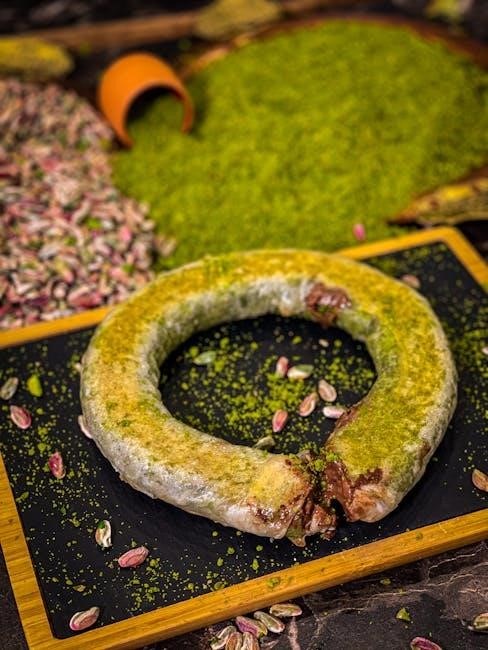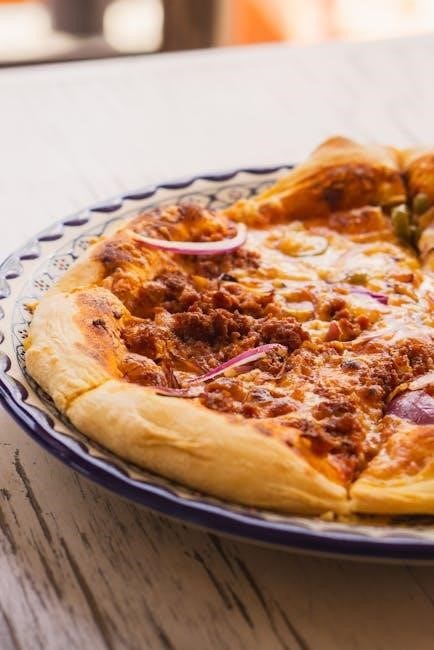For a delightful breakfast experience, baking pancake sausage on a stick in the oven offers a convenient method. Using the oven ensures even cooking and a satisfyingly warm treat. Ensure you follow the instructions for a good result.
Oven Preparation
Before baking your pancake sausage on a stick, proper oven preparation is key to achieving the perfect texture and flavor. Start by ensuring your oven rack is positioned in the middle. This placement promotes even heat distribution, preventing the bottom from burning while the top remains undercooked. Next, line a baking sheet with parchment paper. Parchment paper prevents the pancake batter from sticking to the sheet, making cleanup a breeze. If you don’t have parchment paper, a lightly greased baking sheet will also work, though it may require a bit more effort to clean afterward. Ensure the baking sheet is large enough to accommodate all your pancake sausage sticks without overcrowding them. Overcrowding can lower the oven temperature and lead to uneven baking. Confirm your oven is clean to avoid any unwanted smells or smoke during the baking process. Remove any spills or food debris that may have accumulated. Finally, gather all necessary tools and ingredients, such as oven mitts, a spatula for transferring the baked sticks, and your pancake sausage on a stick. This preparation guarantees a smooth and efficient baking experience from start to finish.
Preheating the Oven
Preheating the oven is a crucial step in baking pancake sausage on a stick. It ensures that the sticks cook evenly and achieve the desired golden-brown color. Preheat your oven to 350°F (175°C). This temperature is ideal for baking, as it allows the pancake batter to cook thoroughly without burning the sausage. Use an oven thermometer to verify that your oven reaches the correct temperature. Ovens can sometimes be inaccurate, and an thermometer ensures consistent results. Allow the oven to preheat for at least 10-15 minutes. This ensures that the entire oven cavity is heated evenly. A fully preheated oven provides the right environment for the pancake batter to rise properly, creating a fluffy texture. If you’re using a convection oven, you may need to adjust the temperature slightly. Convection ovens circulate hot air, which can cook food faster. Reduce the temperature by 25°F (15°C) if using a convection setting. Remember, preheating is not just about reaching the set temperature; it’s about stabilizing the oven’s internal climate for optimal baking conditions.

Sausage Preparation Before Baking

Before baking pancake sausage on a stick, proper sausage preparation is essential. Start by selecting your preferred type of sausage. Maple-flavored pork sausages work especially well, complementing the sweetness of the pancake batter. Ensure the sausages are fully thawed if frozen to promote even cooking. Pat the sausages dry with paper towels to remove any excess moisture. This step helps the pancake batter adhere better to the sausage. If using full-length sausages, consider cutting them into smaller, manageable pieces, about 1-inch in length. This makes it easier to insert the sticks and ensures even distribution within the pancake batter. For a more secure hold, you can partially cook the sausage before wrapping it in the pancake batter. This is called “par-cooking” and helps the sausage stay in place during baking. Remember to insert the sticks carefully into the sausages. Leave enough space at the bottom for easy handling. Prepared sausages ensure the perfect balance of flavors and textures in your pancake sausage on a stick.
Par-Cooking the Sausage
Par-cooking the sausage is a crucial step in preparing pancake sausage on a stick. This process involves partially cooking the sausages before encasing them in pancake batter and baking. Par-cooking ensures that the sausage is fully cooked and heated through by the time the pancake is golden brown. To par-cook the sausages, you can use a skillet or frying pan over medium heat. Lightly grease the pan with cooking spray or a small amount of oil to prevent sticking. Cook the sausages for about 5-10 minutes, turning them frequently to ensure even browning on all sides. The sausages should be browned but not fully cooked through at this stage. Remove the sausages from the pan and let them cool slightly before proceeding with the next step. This cooling period will make them easier to handle when inserting the sticks and wrapping them in pancake batter. Par-cooking also helps to render some of the excess fat from the sausages, resulting in a less greasy final product. Remember that the goal of par-cooking is to ensure that the sausage is safe to eat and has a pleasant texture. Adjust the cooking time to suit the size and type of sausage you’re using.
Baking Time and Temperature
Achieving the perfect balance of golden-brown pancake and thoroughly cooked sausage depends heavily on the baking time and temperature. A consistent oven temperature is essential for even cooking. Generally, a temperature of 350°F (175°C) is recommended for baking pancake sausage on a stick. This temperature allows the pancake batter to cook through without burning, while also ensuring that the sausage is heated to a safe internal temperature. The baking time will vary depending on the size of the pancake sausage on a stick, but typically ranges from 18 to 20 minutes. It is important to monitor the pancake sausage on a stick closely during baking. Check for a light golden-brown color on the pancake. If the pancake is browning too quickly, you can lower the oven temperature slightly or cover the pancake sausage on a stick loosely with foil. To ensure the sausage is fully cooked, use a meat thermometer to check the internal temperature. The sausage should reach a temperature of 160°F (71°C). Adjusting the baking time based on your oven and the size of the pancake sausage on a stick is key to achieving the best results. Always use caution when removing the pancake sausage on a stick from the oven, as they will be hot.
Baking at 350°F
Baking pancake sausage on a stick at 350°F (175°C) is often the sweet spot for achieving a delightful balance of textures and flavors. This temperature allows the pancake batter to cook evenly, resulting in a fluffy, golden-brown exterior. Simultaneously, it ensures that the sausage inside is heated thoroughly to a safe internal temperature. When baking at 350°F, start by placing the pancake sausage on a stick on a baking sheet lined with parchment paper. This prevents sticking and makes for easy cleanup. The baking time at this temperature typically ranges from 18 to 20 minutes, but it’s essential to monitor the pancake sausage on a stick closely. Look for a light golden-brown color on the pancake and ensure that the sausage is heated through. If the pancake is browning too quickly, you can loosely cover it with foil. To verify that the sausage is fully cooked, use a meat thermometer to check its internal temperature. It should reach 160°F (71°C). Remember that oven temperatures can vary, so adjustments to the baking time may be necessary. Always use caution when removing the pancake sausage on a stick from the oven.
Checking for Doneness
Ensuring your pancake sausage on a stick is cooked to perfection involves several key checks for doneness. First, visually inspect the pancake exterior; it should be a light golden-brown color, indicating it’s cooked through. The pancake batter should appear set and no longer look wet or doughy. Press gently on the pancake; it should feel firm and springy to the touch. If the pancake still feels soft or mushy, it needs more time in the oven. The internal temperature of the sausage is crucial to verify. Use a meat thermometer to check the sausage’s temperature. Insert the thermometer into the center of the sausage, ensuring it reaches at least 160°F (71°C). This ensures the sausage is safe to eat. If the sausage hasn’t reached this temperature, return the pancake sausage on a stick to the oven for a few more minutes, checking again until it’s done. Cut into one pancake sausage on a stick to visually inspect the sausage. Ensure it’s heated through, with no cold spots; The pancake should be fully cooked, with no uncooked batter visible. If everything looks good, it’s time to remove them from the oven.

Adjusting Baking Time

Achieving perfectly baked pancake sausage on a stick often requires adjusting the baking time based on various factors. Oven calibration is a primary consideration; ovens can vary in temperature accuracy. If your oven tends to run hot, reduce the recommended baking time by a few minutes. Conversely, if it runs cool, you may need to increase the time. The size and thickness of your pancake sausage on a stick will also impact baking time. Thicker pancakes or larger sausages will require a longer baking duration to ensure they are thoroughly cooked. Monitor the color of the pancakes as they bake. If they are browning too quickly, lower the oven temperature slightly or cover the baking sheet loosely with foil to prevent burning. Conversely, if the pancakes are not browning sufficiently, increase the temperature slightly or remove the foil for the last few minutes of baking. Start with the recommended baking time and check for doneness a few minutes early. Use a toothpick or skewer to test the pancake’s center; if it comes out clean, they are done. If not, continue baking and checking every couple of minutes. Remember, patience is key to achieving the perfect pancake sausage on a stick!
